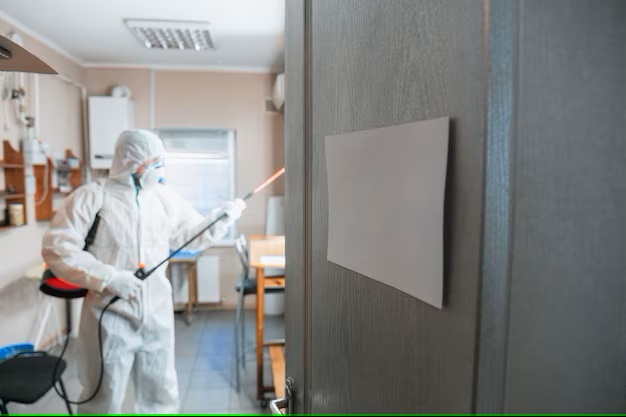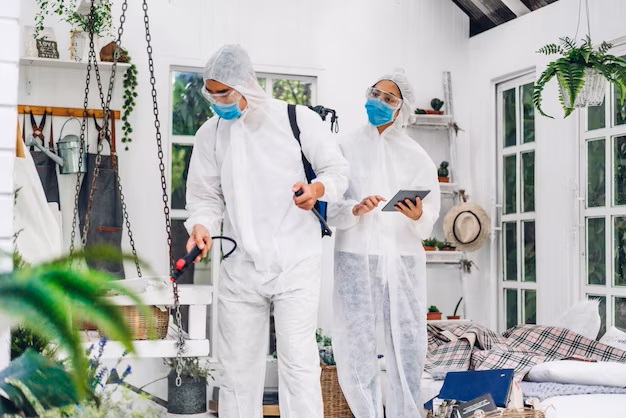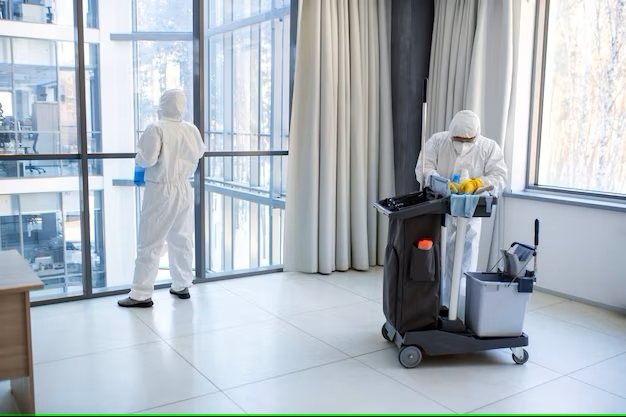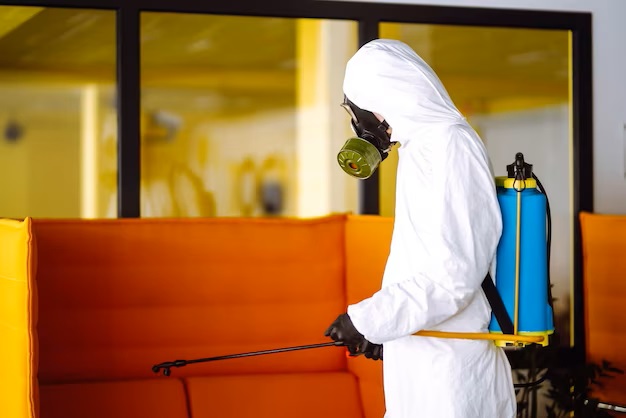The Role of Sanitation in Pest Control: Eliminating Attractants for Pests

Pest control is a fundamental aspect of maintaining a healthy and comfortable living or working environment. Pests not only pose health risks but can also damage property and disrupt daily life. In this blog, we will delve into a crucial element of effective pest control: sanitation. Understanding how sanitation plays a pivotal role in eliminating attractants for pests is essential for keeping unwanted critters at bay. Let’s explore how keeping things clean can be a powerful weapon in the fight against pests.
Understanding Ant Behavior
To combat pests effectively, it’s essential to comprehend what attracts them to a particular location. Pest attractants are elements that draw pests, making an area appealing for them to thrive. These attractants often include food, water, shelter, and waste.
Food: The Primary Attractant for Pests: Food is one of the most potent attractants for pests. Whether it’s crumbs on a kitchen counter, improperly stored pantry items, or pet food left out overnight, pests are quick to seize any opportunity to access a food source.

The Connection Between Sanitation and Pest Infestations
The link between poor sanitation practices and pest infestations is undeniable. Neglecting cleanliness and allowing attractants to accumulate can lead to a pest invasion. Let’s explore this connection further through real-life examples and case studies that highlight the consequences of inadequate sanitation.
Water: A Vital Necessity: Water is another critical attractant for many pests. Even minor leaks, dripping faucets, or stagnant water can create a hospitable environment for pests like mosquitoes, cockroaches, and rodents.
Shelter and Hideouts: Pests seek shelter and hiding spots to protect themselves from predators and environmental factors. Cluttered and untidy spaces provide ideal hiding spots for pests.
Waste: A Treasure Trove: Waste, including garbage and organic matter, is a goldmine for pests. It provides not only food but also breeding grounds for many unwanted critters.

The Connection Between Sanitation and Pest Infestations
The link between poor sanitation practices and pest infestations is undeniable. Neglecting cleanliness and allowing attractants to accumulate can lead to a pest invasion. Let’s explore this connection further through real-life examples and case studies that highlight the consequences of inadequate sanitation.
Benefits of Sanitation in Pest Control: Maintaining a clean and sanitary environment offers a multitude of benefits in the realm of pest control. By eliminating attractants through proper sanitation practices, you can significantly reduce the need for chemical pest control methods. Let’s delve into these advantages and see how sanitation becomes a natural and eco-friendly pest deterrent.
Identifying and Eliminating Attractants
Now that we understand the role of attractants, it’s time to roll up our sleeves and get practical. We’ll provide you with actionable tips and guidelines on how to identify and eliminate common pest attractants effectively. Let’s break it down further into key subsections:
Proper Food Storage and Disposal: Discover the best practices for storing and disposing of food items to prevent pests from feasting in your kitchen.

Managing Water Sources: Learn how to spot and fix water sources that may be attracting pests into your space.
Waste Management and Disposal: Explore efficient waste management techniques that keep pests at bay.
Maintaining a Clutter-Free Environment: Understand the importance of decluttering and how it can deter pests from making themselves at home.
The Role of Routine Cleaning
Regular cleaning routines are the foundation of effective pest prevention. We’ll emphasize the significance of consistent cleaning practices and provide insights into specific cleaning tasks and schedules for different areas of your property.
Sanitation Practices in Different Settings: Sanitation strategies vary depending on the setting. We’ll discuss tailored approaches for various environments, including:
Residential Homes: Tips and tricks to keep your home pest-free.
Commercial Establishments: Maintaining cleanliness in businesses to protect both customers and employees.
Restaurants and Food Service Industry: Critical sanitation practices in the food industry to prevent contamination.
Agricultural Settings: Strategies for farms and agricultural areas to safeguard crops and livestock.

The Environmental and Health Benefits
Sanitation doesn’t only benefit pest control; it also has far-reaching positive effects on the environment and human health. We’ll delve into these advantages, including the reduced need for chemical pesticides and the resulting environmental benefits.
Tips for Maintaining Long-Term Sanitation: Sustaining a pest-free environment requires ongoing effort. We’ll offer guidance on how to maintain long-term sanitation practices and the role of education and awareness in this endeavor.
we’ve explored the critical role of sanitation in pest control. By understanding and eliminating attractants, adopting routine cleaning practices, and tailoring sanitation efforts to specific settings, you can create a pest-free environment that promotes both health and well-being. The benefits extend beyond pest prevention, positively impacting the environment and overall quality of life. We encourage you to implement these practices in your homes or businesses for a cleaner, safer, and pest-free future.
Remember, the first step in effective pest control is maintaining a clean and sanitary environment. With these insights, you’re well-equipped to take control of your space and keep it pest-free.
